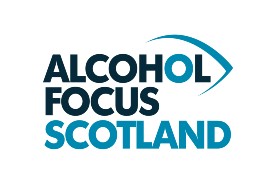Dr MacGilchrist
I'm a consultant liver specialist at the Royal Infirmary of Edinburgh.

The sort of patients I’ll see with alcohol-related liver disease fall into two categories. There are lots of patients in my ward with advanced liver disease. They might be bright yellow with severe jaundice and feel terrible, patients with severe fluid retention which is very uncomfortable, patients who are confused – ranging from mild confusion to being in a coma. Perhaps the most extreme example is of patients who get severe internal haemorrhage where they will vomit blood and be extremely unwell.
The liver itself is very effective at soaking up punishment so the liver has to be very badly damaged before the disease comes to light.
The second type of person I see is somebody who has an abnormal liver test detected before they have symptoms. I often see patients in the clinic who seem completely well but there is liver damage happening underneath the surface. That’s the sort of person who you can perhaps intervene and help; the patients in the ward with advanced complications have irreversible damage and it’s very hard to turn the clock back.
We see people from all walks of life. But the people who are hit hardest for sure are the people from the most socially deprived areas.
You’ll hear a lot about younger patients and more women than we used to see. That’s certainly true but the vast majority of people we see are still men, usually in their middle age. It is a tragedy to see somebody in their early 30s or even younger who already has cirrhosis of the liver. These patients may have alcoholic hepatitis - a severe sudden acute injury to their liver which is often fatal.
It’s important that people understand that it’s the total volume of alcohol taken that does the damage. It doesn’t matter what type of alcohol or whether it’s in a binge or slowly over time. The strength of wine and beer has increased over the past few decades so the old rules about units are an under-estimate. The person who is having what they think is a safe limit of a couple of glasses of wine every night may in fact be doing themselves liver damage. It’s that insidious damage which is dangerous because it is so hidden as compared to someone whose binge drinking is obvious.
Most patients I see who have liver damage with cirrhosis will have been drinking in excess of what’s safe for many years, usually decades, often without realising it.
I can’t emphasise enough this long lead-in period of apparent good health when the damage is occurring. Many patients read in the media about these safe limits – they know they’re drinking more than that but assume they’re one of the lucky ones because they feel ok, little knowing the damage is happening under the surface.
Most patients I see with cirrhosis will have a degree of dependence but it is surprising - some patients find out they have liver disease and they can stop drinking. But for many patients, their heart rules their head - they want to stop but alcohol is an addictive and destructive drug and the alcohol dependency ruins not just their own lives but the lives of people round about them.
It’s often a tragic cycle – first they lose their job, then their marriage, then their health.
Patterns of drinking have changed a lot over the years. Nowadays, most alcohol is not consumed in pubs, it’s consumed in the home or tragically sometimes in public spaces such as down in the park. Particularly heavy drinkers become very sensitive to the price of alcohol - they will step down so they’re spending the same amount of money but getting more alcohol for their money. There’s been rightly a lot of publicity about very cheap alcohol – particularly very cheap cider and vodka – and the damage that alcohol can do for very low spend is scary.
The heavier drinkers, particularly dependent drinkers, rely on and concentrate on cheaper alcohol.
I feel very passionately about minimum unit pricing because I like to think that as a doctor I can approach the evidence impartially and the evidence is overwhelming that in every culture, at every time point there is a very strong link between alcohol consumption and alcohol related deaths; and between alcohol consumption and the availability of alcohol. The availability is a balancing act between one’s disposable income and the price of alcohol.
Price is an absolutely crucial determinant of deaths from alcohol-related liver disease and deaths related to alcohol in general.
The two ways that you can influence price are by taxation or by this idea of setting a threshold below which alcohol cannot be sold. Minimum unit pricing very selectively targets the heaviest drinkers because they are the ones who are drinking the very cheap alcohol; you couldn’t invent a better public health policy.
We’ve got to think of alcohol as a drug. Alcohol is not the same as buying your food and drink in the supermarket. This is a drug and we have to approach it as such and regulate it as such.
Although I’m spending my professional life looking after people who have advanced liver disease, the solution to alcohol-related liver damage doesn’t lie in the hands of doctors like me. This is a public health issue and prevention rather than cure is what we need.
If I as a doctor could give one message to people who are at risk out there, it’s to realise that these safe limits we talk about for alcohol are real. Alcohol, drunk to excess is damaging your liver, even if you’re feeling fine. This is a silent illness until it’s too late.
